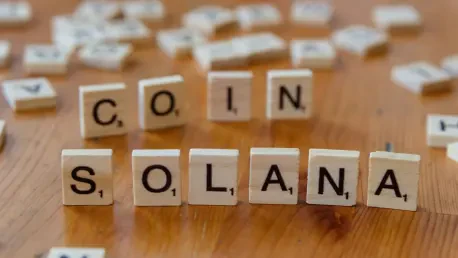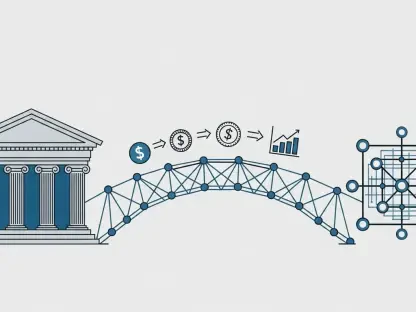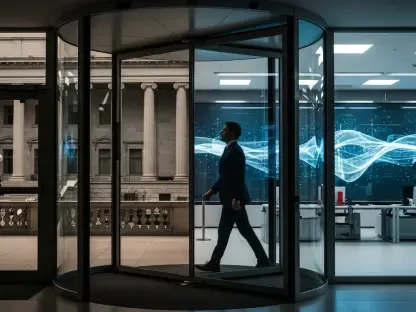The adoption of blockchain technology in environmental conservation has reached new heights with the innovative initiatives spearheaded by Somos Axolotl, a nonprofit organization dedicated to safeguarding the unique Axolotl species in Mexico. Positioned in the culturally rich Xochimilco district, the organization adeptly combines decentralized finance with ecological preservation. Through integrating the Solana blockchain, this effort is not just a testament to technological advancements but also an insightful demonstration of the potential for blockchain to catalyze positive change in ecological practices. Far from being a mere financial tool, the Solana blockchain assists Somos Axolotl in transforming how conservation projects are conceived and funded. This initiative exemplifies the synergy between advanced digital technology and pivotal environmental concerns, setting a benchmark for future green technologies.
Merging Blockchain Technology with Conservation Efforts
At the core of Somos Axolotl’s approach is the adept utilization of the Solana blockchain to redefine the dynamics of stakeholder involvement and funding in conservation. By becoming a validator node within the Solana network, Somos Axolotl has developed a groundbreaking funding model that transcends traditional financial motives. This model melds economic incentives with environmental consciousness, fundamentally altering perceptions of blockchain’s role in society. Stakeholders are invited to stake their SOL tokens with the nonprofit, earning staking rewards while simultaneously contributing financially to vital conservation efforts. This dual-value system of financial and ecological return transforms typical staking activities into meaningful social contributions. The availability of verified pathways for stakeholders to witness the impact of their contributions aligns with the burgeoning trend of “impact staking” within the blockchain community. The transparent allocation of funds toward habitat restoration and regenerative agriculture fosters a sense of trust and sustained engagement from participants, reshaping their involvement from abstract token holders to active conservation partners.
Transforming the validator landscape from purely technical nodes to community-driven entities, Somos Axolotl broadens the conventional understanding of validator roles. This redefined paradigm has the potential to inspire other organizations to leverage similar methodologies, transcending the commercial-centric approach traditionally associated with validator nodes. Such a shift in perspective highlights the collaborative potential of blockchain, allowing for projects that effectively tackle real-world issues while maintaining economic viability. With a strategic alignment of validator-generated income and conservation outcomes, the project illustrates how decentralized finance can act as a bedrock for sustainable environmental interventions. The emphasis on linking blockchain mechanisms with ecological goals within such projects could pave the way for further adoption of impact-driven strategies across various domains of the blockchain network.
Economic and Ecological Benefits
The economic infrastructure underpinning Somos Axolotl’s initiative underscores the strategic benefits derived from validator operations within the Solana network. Operating as a validator node entails significant initial setup investments; however, it yields remarkably stable ongoing expenses coupled with linear growth in revenue correlating with staked SOL volumes. This enables the organization to remain competitive in delivering attractive staking yields while simultaneously allocating surplus funds to conservation projects. Such an operational model engenders a self-sustaining cycle in which increased staking directly enhances the financial capacity to fund extensive ecological projects, thereby maximizing impact. This economic advantage not only boosts the project’s sustainability but also offers a persuasive argument for similar nonprofit ventures, potentially setting a trend for validator-based philanthropy.
The geographical focus on Xochimilco is particularly significant, given its recognized status by UNESCO for both cultural and ecological value. Through integrating advanced regenerative agricultural practices, the organization supports local farmers’ efforts to fortify soil health and minimize chemical reliance, subsequently benefiting the broader ecosystem. By channeling validator-derived revenues into tangible ecological and agricultural projects, Somos Axolotl succeeds in linking digital financial operations with real-world environmental gains. The encompassing approach, combining art and environmental education, further cements the project’s commitment to community involvement and ecological awareness.
Shaping Future Conservation Models
Somos Axolotl is revolutionizing the way stakeholder involvement and funding in conservation are approached by using the Solana blockchain. By operating as a validator node within Solana’s network, Somos Axolotl has pioneered a new funding model that goes beyond traditional financial motives. This model combines economic benefits with environmental responsibility, reshaping how blockchain is perceived in our society. Stakeholders are given the opportunity to stake their SOL tokens with the nonprofit organization, earning rewards while financially supporting crucial conservation initiatives. This dual system of financial and ecological returns turns common staking activities into significant social contributions. Stakeholders can verify the impact of their contributions, aligning with the “impact staking” movement in the blockchain community. The transparent distribution of funds towards habitat restoration and regenerative agriculture builds trust and encourages continuous engagement, transforming stakeholders from mere token holders into active conservation partners.
Somos Axolotl is changing the validator landscape from being solely technical to community-oriented. This new paradigm may inspire other organizations to adopt similar approaches, moving beyond the typical commercial focus of validator nodes. By aligning validator income with conservation outcomes, the project demonstrates how decentralized finance can underpin sustainable environmental solutions. This focus on bridging blockchain technologies with ecological objectives could encourage more impact-driven strategies across various sectors of the blockchain ecosystem.









